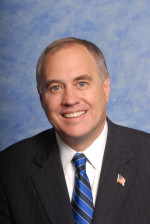Two Westchester County municipalities are doing better financially than most cities in the state, according to a series of December fiscal reports from state Comptroller Thomas DiNapoli.
Rye and White Plains were ahead of the pack in the comptroller”™s municipal profiles due to low poverty rates and stable budgets balanced on large, sturdy and affluent property tax bases. The comptroller”™s profiles rated municipalities across the state based on factors such as the amount of cash on hand and the tendency to issue balanced budgets.

“White Plains and Rye are on solid financial ground and not facing the demographic and fiscal stress challenges that are afflicting other cities in New York,” DiNapoli said. “By taking advantage of these favorable circumstances, each municipality has been able to encourage economic development and cultivate financial stability for residents and taxpayers.”
Rye is a city mostly in name, with only 16,000 residents and suburban neighborhoods with a large number of owner-occupied homes and a vacancy rate of 5.4 percent or about half that of the median for a city in New York. The city”™s homeownership rate is 73.6 percent, well above the 50.5 percent median for a city in the state.
Rye”™s median home value is more than $1 million, which is the highest value of any city in the entire state and its median household income is a sizable $142,469, considerably more than the statewide median household income of $38,699. Rye”™s child poverty rate, 1 percent, was the second smallest of any city in the state.
Rye, with its wealthy demographics, has been able to rely more heavily on its property taxes than other cities in the state. According to DiNapoli”™s fiscal profile, property taxes accounted for 46.2 percent of Rye”™s 2011 revenues while the average for state cities was 27.1 percent of revenues.
The city also does not rely as heavily on aid from Albany, with state aid making up only 5.7 percent of city revenues as opposed to the 18.8 percent average of other cities in the state.
The mayor and Rye city councilmembers receive no compensation for their positions, with the day-to-day operations run by an appointed city manager who prepares the budget and answers to the council. In recent years, with the added restraint of the state-imposed 2 percent property tax cap, the city has turned to non-property sources of revenue similar to many other Westchester municipalities. Rye generated 26 percent of its 2011 revenue through service fees, higher than the statewide city average of 21 percent.
Rye”™s Mayor Joe Sack, who took office this month after serving as a city councilman, said Rye was an extremely desirable place to live, which goes a long way toward shoring up city finances.
“But this should not mask the fact that we are facing exponential increases in expenses for salaries, health care and pensions, just like other cities with different demographics,” Sack told the Business Journal. “Revenue is nice, but controlling expenses will need to be our focus going forward.”
Both Rye and White Plains saw growth in revenues above the statewide average. The increase in revenues ”“ 4.5 percent for White Plains and 5.7 percent for Rye ”“ have allowed for the communities to increase their reserve funds, also called “rainy day funds.” In 2012, Rye had $6.8 million in rainy day funds, which is equal to about 23 percent of its general fund expenditures, according to the comptroller. White Plains had $12.7 million in its fund, or 9.2 percent of its total expenditures.
Although White Plains also received high marks from the comptroller, it faced more difficulties common to cities such as declining property values. A period of strong economic development boosted the city prior to the recession, and a mix of commercial and retail stores have created a centralized hub for the city of 55,000 residents. Still property values in White Plains declined by 29 percent from 2008 to 2013, after more than doubling from 2002 to 2008.
White Plains faces a more difficult financial situation than other more affluent communities in Westchester, but in comparison to other cities in the state it is still well above the medians. The city, with a 53.4 percent home ownership rate, still ranks above the median city rate of 50.5 percent. The median home value is half of Rye”™s, $518,500, but still above the median of $99,700 for cities and even the statewide median of $301,000.
Vacancies remain low and half the median, at 5.3 percent. White Plains’ median household income is $76,164, above the state median of roughly $76,000 and double the median city household income of about $38,700; but it remains below Westchester”™s $80,725 median household income. White Plains”™ child poverty rate is 13.6 percent, below the 20.3 statewide average and the city statewide average of 28.1 percent.
City Mayor Tom Roach, a Democrat, said stabilizing taxes has been a focus in White Plains.
“We have consolidated departments and services and are continuing to look for efficiencies and other cost-sharing opportunities,” he said. “We are on the right track and I am pleased that this profile by the comptroller recognizes that.”


















